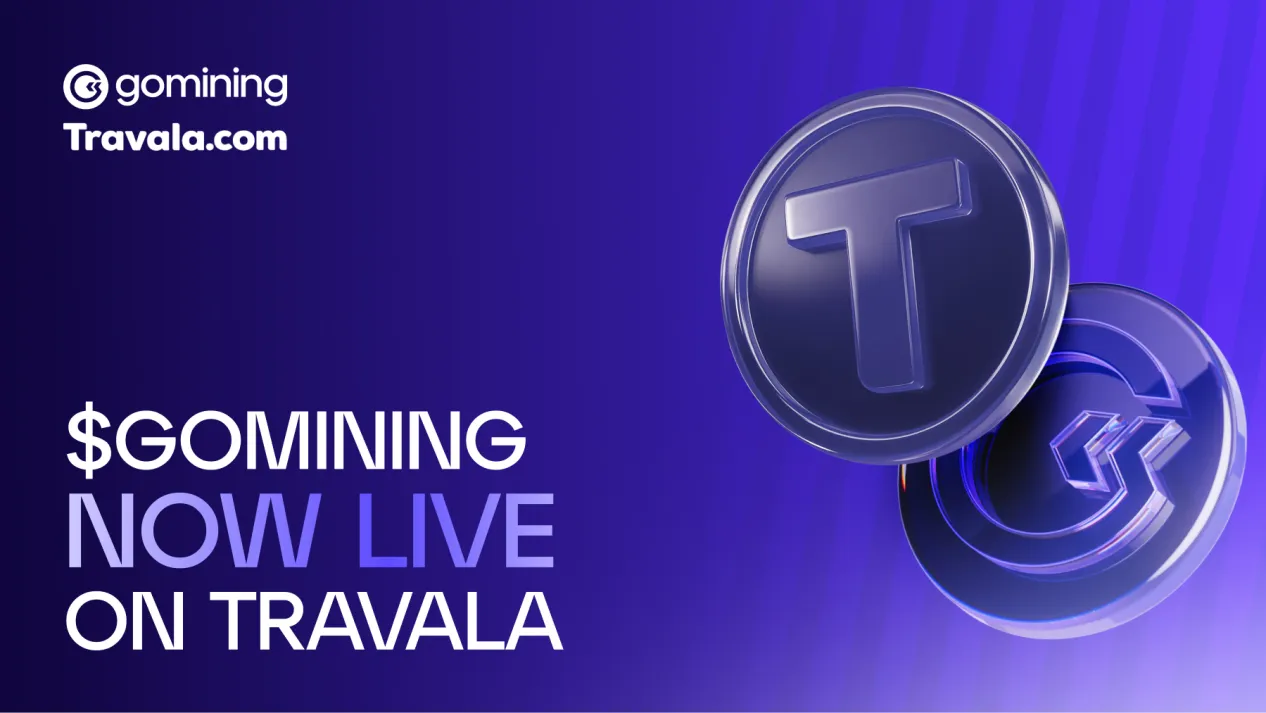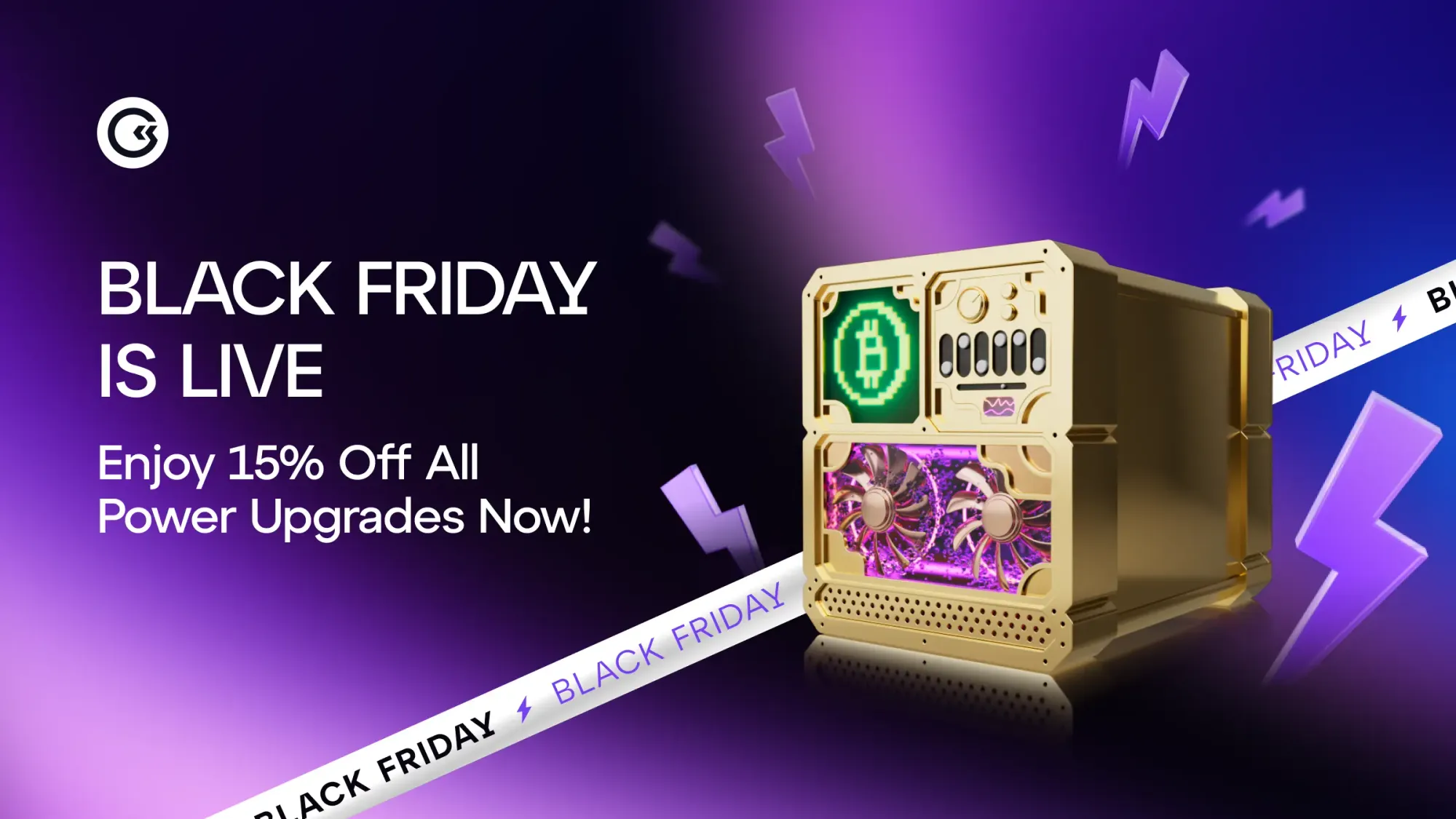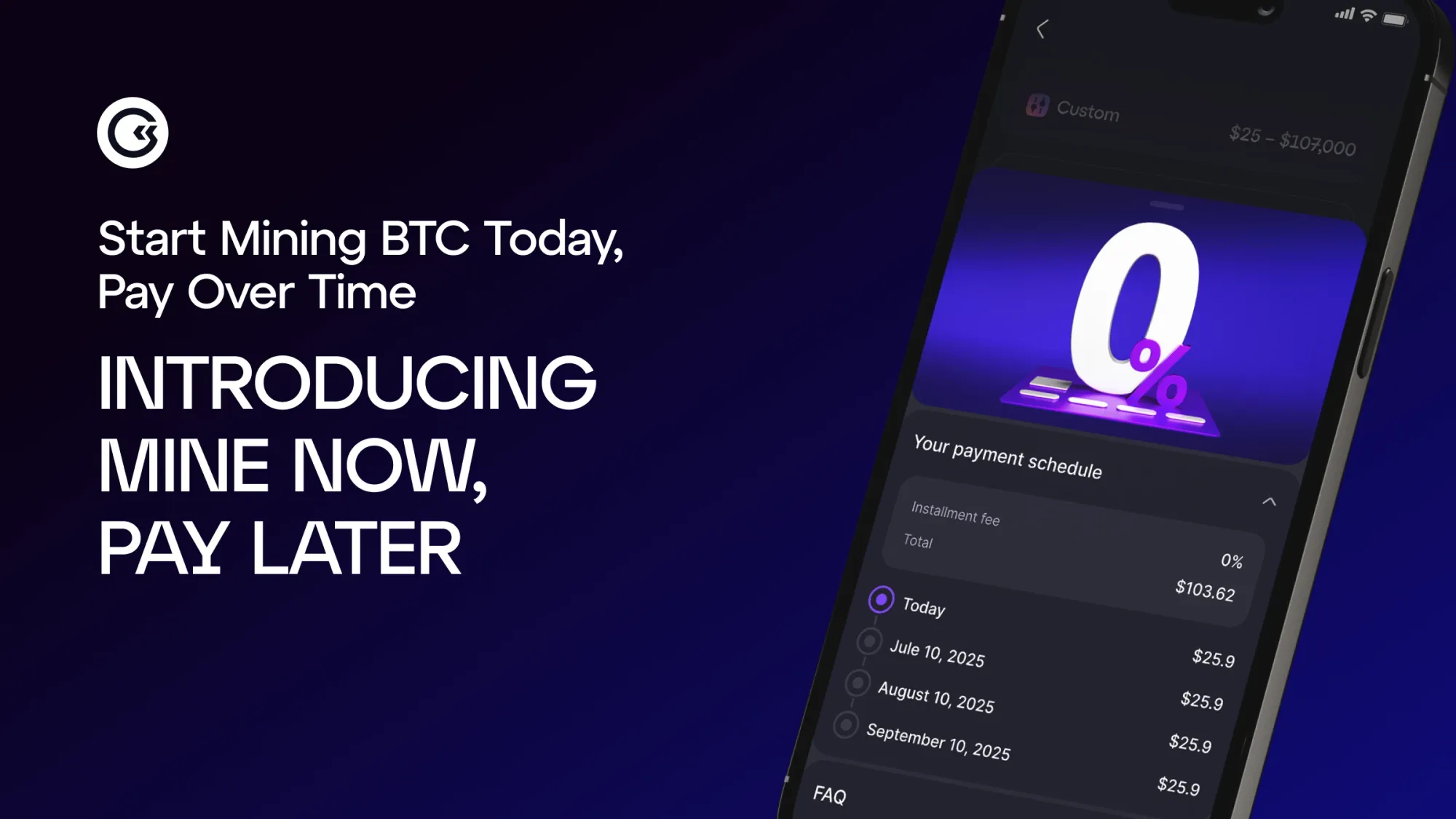PEPE is an example of how internet culture is becoming a financial instrument with the potential for rapid growth alongside a high probability of loss. In this article, we will take a detailed look at where PEPE came from, who is behind it, how the project was formed, and what to expect from it.
How and when Pepe appeared before becoming a cryptocurrency
Pepe (Pepe the Frog) is a character created by artist Matt Furie in the comic strip "Boy's Club" in 2005.
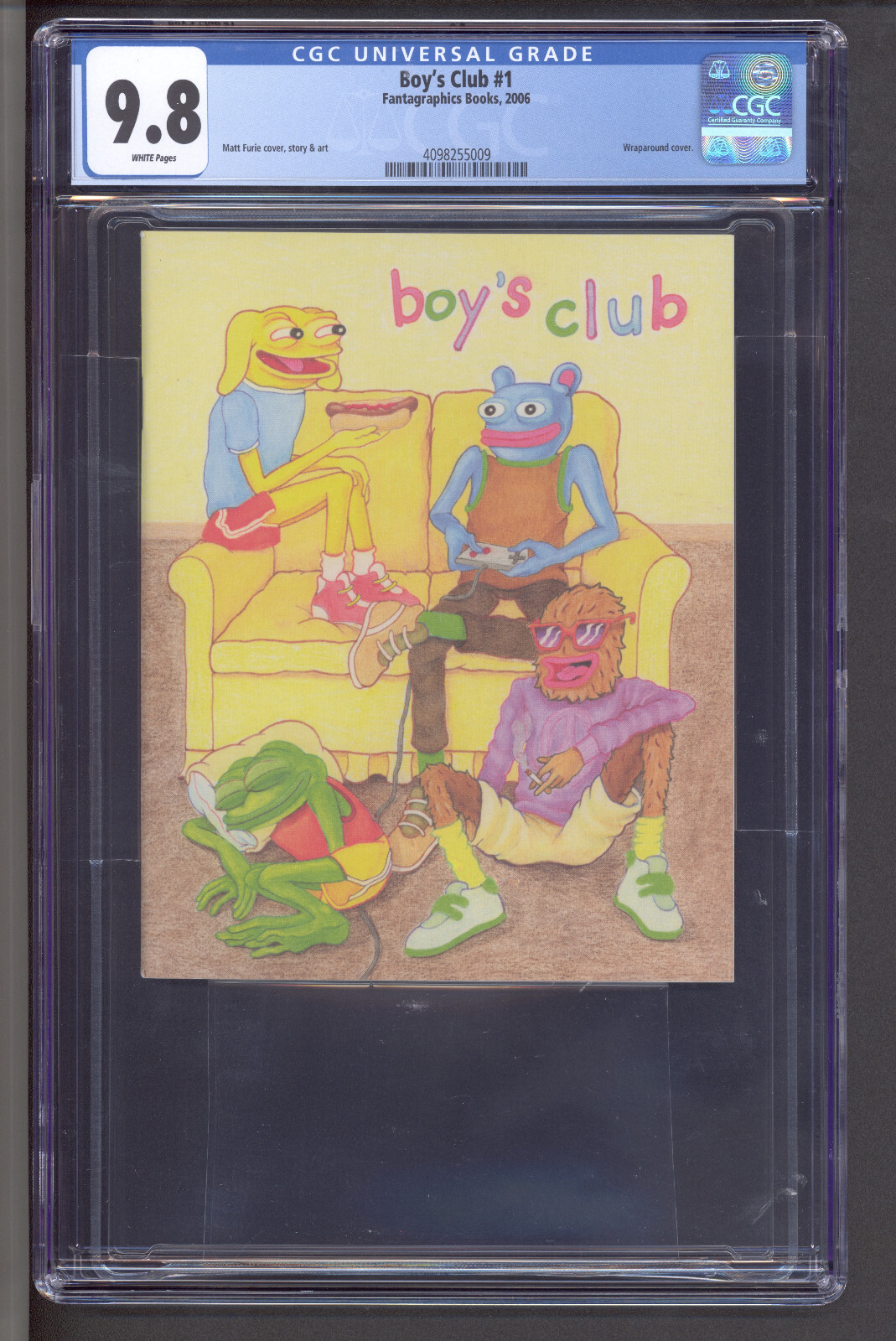
Source: ebay.com
It is a comic strip featuring a distinctive "frog," a simple, expressive image that is easy to repost and remix. Users of forums, Tumblr, MySpace, Gaia Online, 4chan, and Reddit quickly picked up on the image and began creating memes with a wide range of emotional tones (from sadness to sarcasm).

Source: tenor.com
The meme trend and tokenization in 2022-2023, exemplified by Dogecoin and other memecoins, showed that a recognizable meme can be quickly monetized through a token.
"After a quiet end to 2023, PEPE exploded in 2024, tripling its previous high in the spring of 2023. Since then, Pepe's capitalization has exceeded $4 billion." — CoinfomaniaThe launch of PEPE as a token was organic: independent developers created the token, listed it on DEX, and began promoting it through memes and social media.The project is designed as an anonymous smart contract deployment with no public "leader." In reviews and on aggregators, the project is described as a community product rather than an initiative with a visible development team or a single well-known founder.
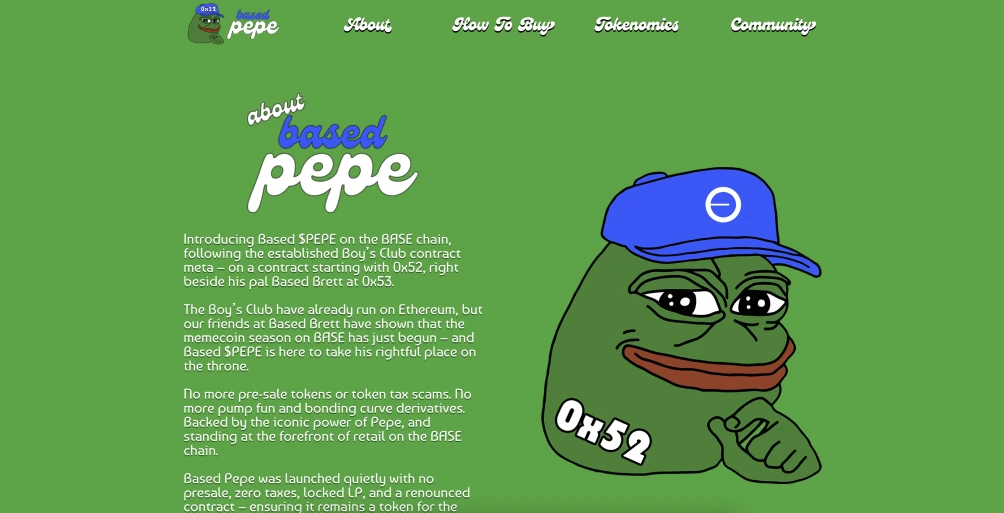
Source: basedpepe.vip
A number of publications feature discussions of early nicknames and community members, but there is no direct documentary evidence linking the project to a specific public figure — any claims about the developer's "name" without on-chain connections are speculative.
"Originally launched as a joke project, PEPE has become a notable player in the memecoin market." — CoinCodeCap
Who is involved in the development of the PEPE ecosystem
Since its creation, the token has been supported by:
- Community and tradersCreating demand through memes, challenges, Discord, Twitter, YouTube, and exchanges.
- Market makers and liquidity providersEnsuring order execution on DEX/CEX, forming market depth; their activity affects slippage and the possibility of arbitrage.
- Exchanges (DEX and CEX) Listings increase visibility and cash flow; listing rules and project verification by major exchanges have influenced trust.
What are the use cases for PEPE?
If you are interested in this cryptocurrency and want to buy or earn money on it, first conduct a thorough check-up. Assess the distribution of tokens (top holders) and the depth of liquidity in the main pools at the moment, analyze on-chain indicators (inflows/outflows to exchanges, active addresses), and social response.
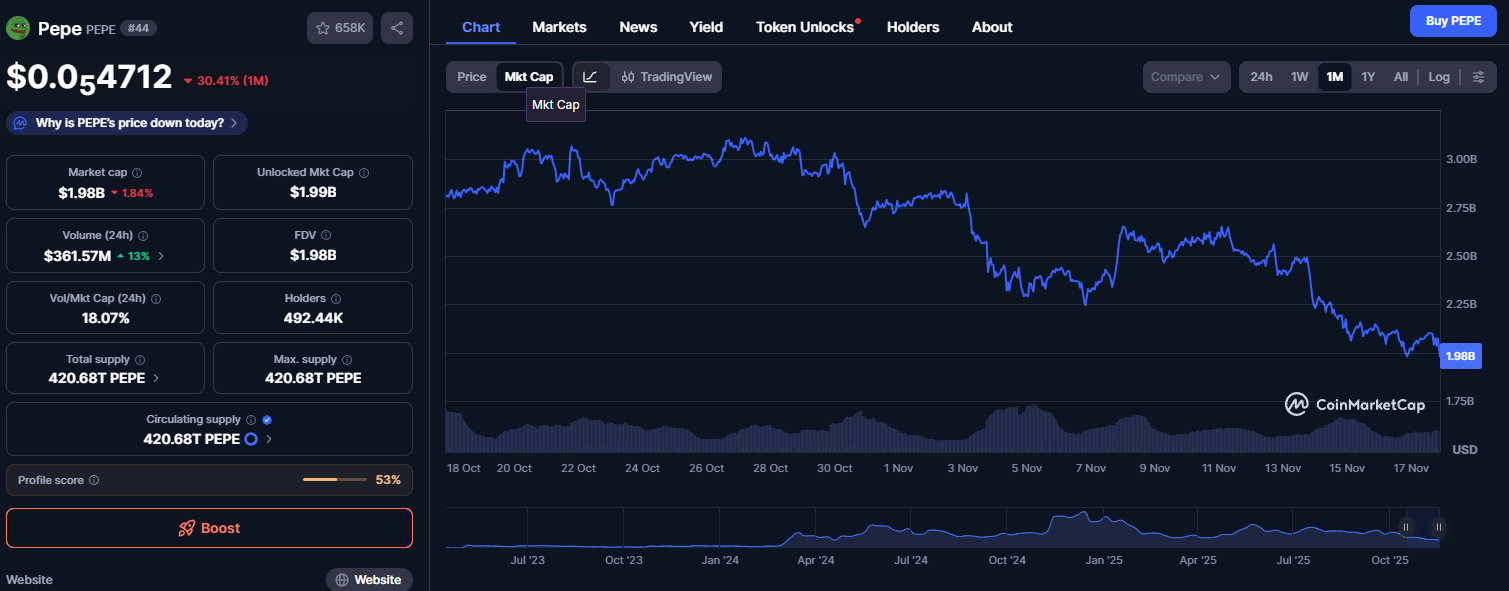
Source: coinmarketcap.com
Only enter with a clear plan. Here are a few examples of how you can make money on PEPE.Short-term speculation, intraday tradingPros: quick income with the right timing. Cons: high competition, commissions, risk of a sharp drop immediately after entering the trade.
"Pepe is one of the most explosive memecoins of 2025. Since spring, the token has been trading extremely volatilely, leaving traders and investors guessing where PEPE will go next." — 99Bitcoins
Arbitrage between DEX and CEXPros: relatively predictable profits on spreads. Cons: requires speed, bot infrastructure, or constant monitoring; commissions can eat into margins.
Liquidity provision (LP) Pros: passive income from fees; Cons: impermanent loss, rug risk, need for a deep understanding of pools and accruals.

Source: uniswap.org
Long-term holding — only with transparent tokenomics Pros: potential for significant growth with real adoption. Cons: memecoins rarely have fundamental utility; chances of "eternal" growth are low.
Expected trends for 2025–2026: is there a place for meme coins?
Expected trends for 2025–2026 show that there is still a place for meme coins, although their role is changing. The strengthening of on-chain analytics and the growth of monitoring tools are making the market more transparent: investors can now more quickly identify token concentrations among "whales" and track social spikes.
Institutional players remain cautious, but retail interest in viral projects remains high. Against this backdrop, PEPE remains a symbol of the meme economy: it has proven its ability to generate short-term gains and attract the attention of millions of users, which means that in new trends, it will be seen as an example of how culture and community can compete with "serious" projects.
Conclusion on PEPE — is the meme coin worth paying attention to?
We have not found any specific public figure who created PEPE in open sources; the project remains the product of an anonymous community and on-chain activity. This is not unique: the history of anonymity can be traced back to the most famous cryptocurrencies — Bitcoin has no founder in the traditional sense, and its origins are partly shrouded in mystery. When making decisions, facts are more important than names: smart contracts, token distribution, liquidity, and market behavior.
If you don't like the activity of memecoins or are not ready for manual verification and monitoring, there is an alternative way to earn money: cloud mining and infrastructure products. GoMining offers ready-made solutions for renting computing power and managing returns: this allows you to earn income without directly trading memecoins and without diving deep into on-chain investigations.
FAQ
- What does knowing who created the PEPE memecoin give you? It gives you an understanding of the token's origins: who deployed the contract, whether the owner has special rights, how the tokens are managed and distributed. This affects the risks of manipulation and the stability of the project.
- How does understanding who created the PEPE memecoin work in crypto? The role of the creator is important through control over the contract and tokenomics. Anonymity itself is not a problem if the contract is transparent, the owner's rights are limited, and there are no hidden mint/pause mechanisms. The creator's publicity enhances their reputation but does not replace technical verification.
- Does the creator's identity play a role in the fate of a cryptocurrency, is it better to be anonymous or not? The creator's identity is secondary; the contract, distribution, and liquidity are primary. Anonymity is acceptable with multisig management and security audits. A public creator adds accountability and communication, but does not guarantee protection from risks.
- How can we use the knowledge of who created PEPE in 2025? Look at the contract, not the name: check the deployment address, verified source, owner rights, presence of multisigs, audit, distribution of top holders, liquidity depth, inflows/outflows to exchanges, and social sentiment. Form your position only after verifying the data.
- What metrics are related to understanding the origin of PEPE? MCAP and FDV, the share of top 10/top 20 holders, trading volume (DEX/CEX), LP depth, daily active addresses, inflows/outflows to exchanges, TVL in pools, unlock dates, the presence of an audit, and the limitations of owner rights.
- Is it possible to make money on PEPE? Yes, but earnings depend not on the name, but on analytical data: short-term trading on news, DEX/CEX arbitrage, liquidity provision (consider impermanent loss), participation in community activities (airdrops/NFT). Always consider the possibility of complete capital loss.
- What mistakes do beginners make when assessing the risks of trading PEPE? Beginners often blindly follow the community and copy the crowd. They believe in short-term hype and buzz, mistaking viral memes and paid marketing for sustainable demand and liquidity. They enter without a risk and exit plan, overestimate their portfolio share, store large amounts on exchanges, and trust unverified "signals" from social media instead of on-chain verification.
- How does PEPE affect the cryptocurrency market? PEPE amplifies short-term volatility, attracts retail capital, and serves as a sentiment indicator: surges in memes and social signals are quickly reflected in volume and liquidity. The project stimulates the development of on-chain and social analytics.
- Where can I follow updates on the PEPE cryptocurrency? Blockchain observers (Etherscan), aggregators (CoinGecko/CoinMarketCap), liquidity and flow dashboards, exchange and auditor reports, official project channels, verified analysts on X/Twitter, and thematic forums.
- What do experts expect from the PEPE cryptocurrency in 2026? PEPE is likely to remain one of the key meme tokens, maintaining its niche at the intersection of humor and crypto culture. as the project matures, a trajectory similar to SHIB is possible: ecosystem expansion, utility functions, and, with sufficient community support and liquidity, the launch of its own blockchain or modular L2 network.
Telegram | Discord | Twitter (X) | Medium | Instagram
NFA, DYOR.
The cryptocurrency market operates 24/7/365 without interruptions. Before investing, always do your own research and evaluate risks. Nothing from the aforementioned in this article constitutes financial advice or investment recommendation. Content provided "as is", all claims are verified with third parties and relevant in-house and external experts. Use of this content for AI training purposes is strictly prohibited.
November 26, 2025







